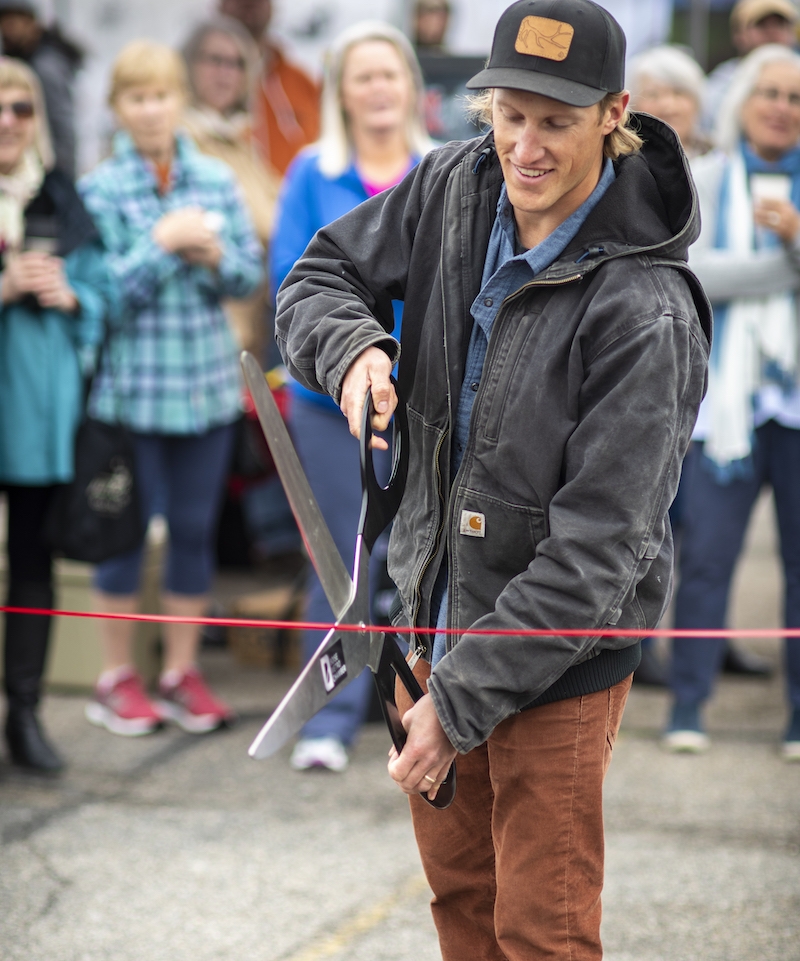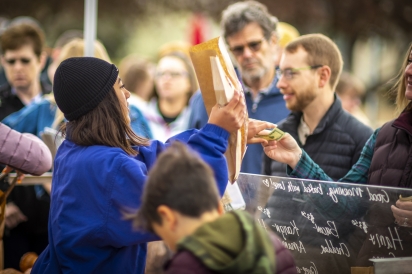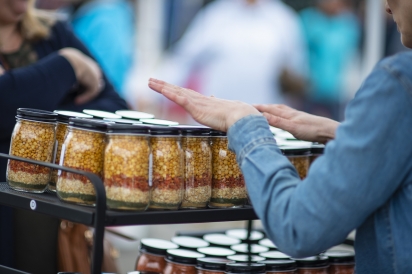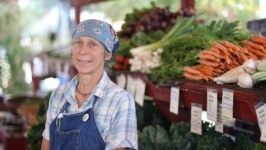Farmers Markets in Flux
Most of us don’t see the continuous train of decision-making, researching, planning and compromising that goes into making our favorite Saturday morning foray into local food work seamlessly, but it’s there.
Similar to small farmers struggling to find affordable and fertile land they can call their own, farmers markets also face a large degree of fragility with often no guarantee of longevity.
A recent report by NPR’s Jodi Helmer, “Why Are So Many Farmers Markets Failing? Because the Market Is Saturated,” notes that between 1994 and 2019 the number of farmers markets nationwide increased by 6,600.
While this huge uptick in number of markets may seem like a positive thing, it also highlights weaknesses in the local food system and the infrastructure that supports it. Unfortunately, many of those new markets fail due to lack of vendors, customers, and affordable and permanent spaces.
“We don’t need more markets,” Helmer writes. “We need stronger and more viable markets.”
A goal of becoming a stronger and more viable market in large part prompted the board of the Boise Farmers Market (BFM) to search for a new location and move away from the parking lot at 10th and Grove that served as home since the market’s inception in 2013.
BFM building committee member and former board member Janie Burns of Meadowlark Farm says that in August 2017 the market board decided to focus on the strategic goal of finding a permanent, year-round, indoor/outdoor location for the market.
With open and affordable space in the heart of downtown Boise quickly becoming a thing of the past and many of those spaces under lease or threat of development, Burns says it was in the market’s best interest to be proactive. “Emergencies are never good times to make decisions,” she says.
The BFM had also outgrown its old location. According to BFM Board President Mike Sommer, many market vendors had their best year of sales in 2018. If the market wanted to bring in more vendors and accommodate more customers, it would need a larger space in which to operate.
Prompted by dreams of a bigger, year-round location and fears of getting booted out of (or priced out of) its current spot, the search for a new market location began.
Developer Derick O’Neill of River Shore Development approached the BFM board and things fell into place. The market has a new home in the heart of the recently designated urban renewal district. However, the length of the lease on the new location remains undisclosed.
The new BFM location at 1500 Shoreline Drive boasts more vendors, opportunities for new events, classes and activities, and—perhaps best of all—lots of free parking.
“When the developer approached us, it was serendipity,” says Interim Market Manager Tamara Cameron. Cameron says the indoor/outdoor location will also help the BFM unite its marketing efforts instead of having to advertise two different locations for the main market and winter market.
“This location and the developer’s desire to have us as part of his work gives us the chance to think about how the market might play alarger role in the local food system,” says Burns. “Our temporary, oneday-a-week, nine-months-of-the-year market didn’t allow us to evenponder those possibilities.”
But with all these benefits also comes risk. Moving out of the core of downtown and farther away from the Capital City Public Market—which became more a craft and prepared-food market when the vast majority of its farmers (25 vendors in all) split off and formed the BFM in 2013—could mean that fewer people will visit the BFM or that customers won’t be aware of the move.
George Meintel of C & G’s Wild Alaska Salmon, a BFM vendor, was concerned about the move for a few reasons. “First, we’re moving away from the close proximity we shared with the [Capital City] market,” he says. “People did attend both markets and it’s possible they might not travel the distance.”
Meintel’s second concern is about change in general from a vendor’s perspective. “We are dependent on the market for our income and with the move, our customers are faced with change,” he says. “I hope and trust they will follow us to the new location.”
But Cameron says numbers are up.
“Even though it rained, opening day we had 5,700 people vs. 3,200 opening day in 2018,” she says.
“Sales are up. I have heard from some vendors that opening day was not just their best opening day, but their best day ever. Sales are holding steady at this point, one month in.”
Sommer says it has taken the six seasons since the BFM’s inception to establish the market as an important food destination in the Treasure Valley. “We realize it may take some time for customers to get trained up again on where we are and what they can get at the market,” he says, “but we are hoping this period is a lot shorter than the last big move.”
Burns echoed that sentiment. “The farmers and other vendors of the market have already taken the biggest possible risk,” she says. “We started a brand new farmers market six years ago. From zero. We had no name recognition; we really had nothing. Is there a risk? Yes. Is it worth it? Absolutely.”
The BFM is not alone in this moment of change. Just a few hours away, the Wood River Farmers’ Market in Ketchum is also in flux.
Everything ties back to the desire for permanence, which most farmers know well. Permanence seems ever-elusive in the world of farming and food. Farmers of all kinds are familiar with changing variables and dealing with things they often can’t control, like weather, market prices, pests and diseases, availability of suitable land, and more.
The ongoing struggle of both farmers and farmers markets to find a place to call home suggests that we still have a long way to go in creating stable and viable local food systems nationwide.
What can be done to address these weaknesses in the system and find solutions so that farmers and market directors in the future don’t always need to worry about all their hard work being ripped out from under them due to changing landlords, development or any other of the factors that contribute to lack of permanence?
Perhaps more government support is needed. Perhaps it’s something else entirely. Until a solution to the problem of permanence is found, farmers, vendors and the entire local food community can depend on one constant: the community of local food producers and their supporters who act radically simply by choosing to buy locally.
“The Boise Farmers Market is known as a buyer’s market,” says Campbell. “The local, grow-your-own aspect is such a draw for customers. They can say, ‘We know that farmer and we know he grew what he’s selling,’" says BFM vendor Steve Campbell of Tailor Made Beef.
Some days, that feels like enough.
Boise Farmers Market | @boisefarmersmarket
Meadowlark Farm
Capital City Public Market | @capitalpubliccitymarket
C & G’s Wild Alaska Salmon
Wood River Farmers’ Market












